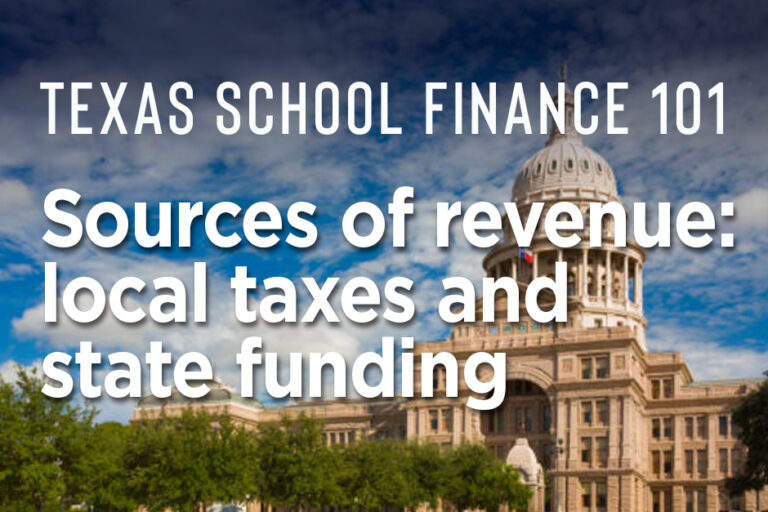
The article below is the second in a series designed to give readers insight into the school finance system in Texas. School finance is complicated. But it matters because it affects everything: student learning, teacher pay, school facilities, security, school buses, computers, career and technical opportunities, internet access, sports, fine arts and on and on and on. Ultimately, it affects the future of Texas.
Each article in the series will bite off a small piece of school finance and attempt to give readers a basic understanding of the system in Texas and Arlington ISD. Check back each Wednesday for a new article.
Two sources: Property taxes and state aid
It takes a lot of money to run a school district. So, where do school districts in Texas get their money?
Districts have two primary sources of revenue: local property taxes and state aid. The state aid comes from money the state raises from sources like sales taxes, business taxes and lottery proceeds.
Read the state policy in the Texas Education Code here.
Here’s basically how it works.
The Texas legislature – not the school board – decides how much revenue each district is entitled to. That total number – the district’s entitlement for a year – is based primarily on the number of students who attend the district’s schools.
How much a district gets per student can vary based on certain student demographics and district characteristics, but we’ll talk more about that in another article. For this article, the important thing to know is that each school district is entitled to receive funding based on student attendance. Add the funding for each student together and you get the total entitlement – the total amount of revenue the school district can collect for that year.
You can think of the entitlement as a pot of money the school district will receive. The size of that pot is set by student attendance. The question is: where will the money come from to fill the pot?
The pot – the total amount of revenue the district is entitled to – is filled with money from the two sources: tax revenue and state aid.
So, then the question is: How much money comes from taxes and how much comes from state aid?
While the size of the pot – and the amount of money in the pot – isn’t going to change, how the pot is filled with money can vary. The amounts of money put in the pot by local taxes and state aid can fluctuate.
They vary depending on how much the school district collects in property taxes. If the school district doesn’t raise enough money from property taxes to fill the pot, the state will pitch in to finish filling it. So, the more tax revenue the district collects, the less money the state will give it. In other words, if a school district’s tax revenue goes up, the state then reduces the amount of aid it provides. If tax revenue goes down, state funding will go up.
So, in Arlington, even though we have stadiums, new entertainment development and rising property values, none of that impacts how much money Arlington ISD receives on an annual basis. It has no impact on the entitlement. What it does mean is that most of Arlington ISD’s revenue comes from property taxes. In other words, Arlington ISD’s pot of money is filled more by tax revenue than state aid.
The big idea behind the system is equity – that all school districts will receive equalized funding. In essence, the system aims to ensure that property rich school districts (school districts that collect a lot in property taxes because their districts have many properties with high property values) and property poor school districts (school districts that are unable to collect much in property taxes because the properties in their district have low values or because the district has a small population with fewer taxable entities) have access to roughly the same amount of funding.
The attempt at equity has merit, but in practice, the system can leave districts underfunded.
Check back next week as we talk more about property taxes.
